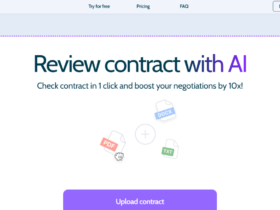The automotive industry is at the forefront of a technological revolution, redefining how we drive, interact, and connect with our vehicles. At the heart of this transformation lies conversational AI, a groundbreaking innovation that seamlessly integrates human-like communication into the driving experience. By enabling intuitive interactions through voice and text, conversational AI is unlocking smarter, safer, and more efficient ways for drivers to engage with their cars.
This blog dives into the ways conversational AI is framing the future of automobiles, bridging technological innovation with customer expectations, and opening up a world of possibilities for car manufacturers and drivers alike.
Why Conversational AI is Critical for the Automotive Industry
In today’s fast-paced world, consumers demand convenience, speed, and personalization. Conversational AI ticks all these boxes, offering solutions that cater to modern drivers’ needs. From simplifying in-car operations to providing real-time insights, this technology is no longer a luxury—it’s a necessity.
According to Global Newswire, the automotive AI market is expected to surpass $53 billion by 2030, reflecting the growing demand for voice-enabled solutions. Leading automakers are already embedding conversational AI into their vehicles to create more connected, efficient, and enjoyable driving experiences.
But what exactly makes conversational AI so transformative? Let’s explore.
Key Features of Conversational AI in Automobiles
1. Advanced In-Car Voice Assistants


For example, Hyundai’s “Hi Hyundai” AI chatbot provides 24/7 personalized guidance, helping users locate dealerships, book test drives, and even explore car features—all through simple voice commands.
2. Multilingual Capabilities
In an increasingly globalized world, multilingual support is no longer optional. Conversational AI can now understand and respond in multiple languages, catering to diverse customer bases. Additionally, advancements in accent recognition ensure that regional dialects and pronunciations are accurately processed, making the driving experience smooth for everyone.
3. Embedded and Cloud-Based Connectivity
Modern conversational AI systems leverage a hybrid approach, combining edge computing (for offline tasks like rolling down windows) with cloud connectivity (for navigation, streaming, and more). This ensures uninterrupted functionality, even in remote areas with limited internet access.
4. Predictive Maintenance & Real-Time Vehicle Insights


5. Voice Commerce Opportunities


6. Personalized Recommendations
By analyzing user preferences and driving habits, conversational AI can offer tailored recommendations. Whether it’s suggesting a fuel-efficient route, recommending a nearby charging station for EV owners, or identifying the perfect car model based on a customer’s requirements, personalization is at the heart of this technology.
7. Enhanced Customer Engagement


Use Cases Driving Conversational AI Adoption
1. Streamlined Test Drive Bookings
Potential buyers no longer need to visit dealerships or make phone calls. With conversational AI, scheduling a test drive is as simple as having a chat. AI assistants can check dealership availability, suggest convenient slots, and send automated reminders—all in a matter of seconds.
2. Simplified Vehicle Customization
Choosing the right car features can be overwhelming. Conversational AI guides users through the customization process, offering suggestions based on their preferences and even providing visualizations of their chosen configurations.
3. Real-Time Navigation Assistance
Conversational AI takes navigation to the next level by providing real-time updates, suggesting alternate routes, and even alerting drivers about road conditions or accidents ahead.
4. Efficient Loan Calculations
Buying a car often involves complex financial decisions. Conversational AI can calculate loan options, interest rates, and EMI breakdowns instantly, helping customers choose the best financing plan.
Challenges & Solutions in Implementing Conversational AI
The Road Ahead
The future of automobiles lies in creating smarter, more connected vehicles that cater to the needs of modern consumers. Conversational AI is not just a feature—it’s a driving force behind this transformation. By enhancing user experiences, enabling predictive maintenance, and opening up new revenue streams through voice commerce, this technology is setting new standards in the automotive industry.
For automakers, the message is clear: embrace conversational AI or risk being left behind in an increasingly competitive market. As the technology continues to evolve, its potential to revolutionize the way we drive, interact, and connect is limitless.
Ready to Transform Your Automotive Business with Conversational AI?
At Shaip, we specialize in providing customized conversational AI data collection and annotation tailored to your AI platform needs. Whether you’re looking to enhance in-car experiences, improve customer engagement, or drive innovation, our expert team is here to help. Contact us today to accelerate your journey into the future of automobiles!













Leave a Reply